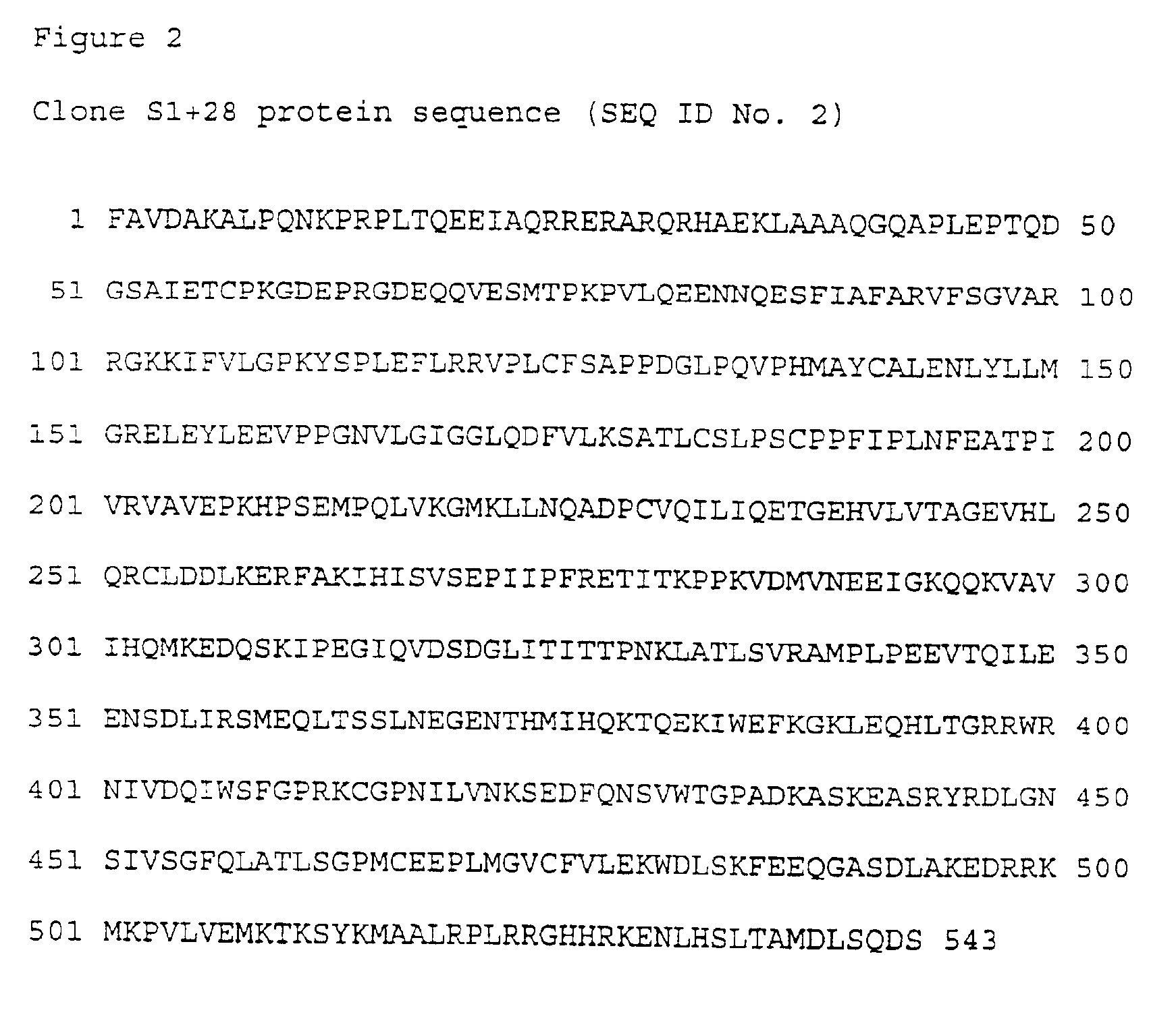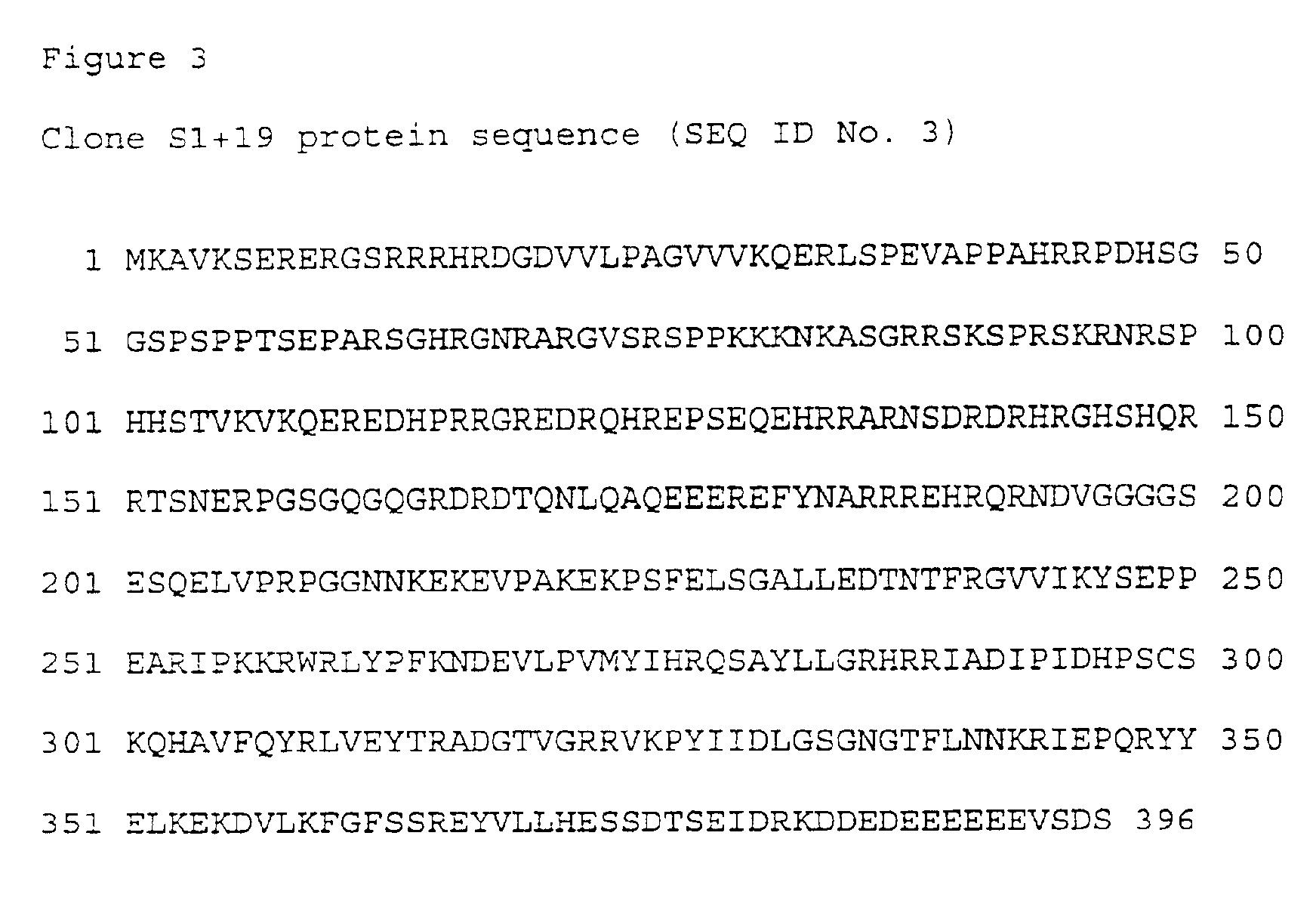Antibody to SNIP1
a technology of antibody and snip1, which is applied in the field of disease treatment and screening of candidate pharmacological compositions, can solve the problems of not knowing how many proteins other than odc are degraded in an antizyme-dependent manner, and achieve the effect of enhancing tgf- responses
- Summary
- Abstract
- Description
- Claims
- Application Information
AI Technical Summary
Benefits of technology
Problems solved by technology
Method used
Image
Examples
example 1
Smad1 Interacts with Multiple Proteins Functionally Linked to the 20S Proteasome
[0626]A modified yeast two-hybrid system was used to screen a human fetal brain library (Zervos et al., 1993). A construct comprising full length Smad1 was used as the bait. For the yeast two-hybrid screen, full length Smad1 was subcloned into BamH1 / Not1 sites of PEG202 by a PCR method, resulting in an inframe fusion between the LexA DNA binding domain (1-202) and Smad1. The Smad1 (G419S) mutant was a kind gift from J. Wrana (Hoodless et al., 1996). The subcloning of Smad1 (G419S), Smad1NL (1-270), Smad1L (146-270) into pEG202 were all carried out by the PCR approach described above.
[0627]Thirteen different cDNAs were identified from a total of forty interaction positive yeast (FIG. 23). The predominant interactor of Smad1 (represented by clone 18 in FIGS. 24A & B), which was isolated 8 times from the screen, is HsN3 (Thomson and Rivett 1996; Kopp et al., 1995; Cruz et al., 1997), a β subunit of the 20S ...
example 2
HsN3 Binding to Smad1 Via the Carboxyterminal Effector Domain of Smad1
[0630]Like other members of the Smad family, Smad1 can be subdivided into three domains: the conserved aminoterminal domain (N, or MHI domain), the serine and proline rich middle linker region (L domain). and the conserved carboxyterminal domain (C, or MH2 domain). The C domains of Smads are considered to be the functional effector domains (Baker and Harland, 1996), while the N domains have been shown to inhibit C domains, possibly via an intramolecular interaction with the C domains (Hata et al., 1997). It has been demonstrated that the N domain of Smad1 has DNA binding activity (Kim et al., 1997), and the C domain has transcriptional activation activity (Liu et al, 1996). However, since both properties were detected only by analysis of mutants of Smad1 (Kim et al., 1997), or fusion proteins comprising Smad1 and a DNA binding protein (Liu et al, 1996), the physiological relevance of these properties are yet to be...
example 3
The Carboxyterminal Domain of Smad1 Binds to HsN3 Before the Incorporation of HsN3 into the 20S Proteasome
[0632]HsN3 is one of the seven β subunits of the 20S proteasome, the catalytic core for 26S proteasome, which mediates both the ubiquitin-dependent and independent proteolysis of most cytoplasmic and nuclear proteins (for review, see Hochstrasser, 1996; Coux et al., 1996; Hilt & Wolf, 1996). Three out of the seven β subunits (XB1, delta and Z in human, replaced by LMP7, LMP2 and MECL1 upon γ-interferon treatment) have been shown to mediate most of the known peptidase activities associated with the 20S proteasome. HsN3 and three other β subunits have been suggested to be inactive β subunits (Seemtiller et al., 1995; Groll et al., 1997). However, direct evidence to completely rule out the possibility that HsN3 has proteolytic activity is not yet available. All three active β subunits are synthesized in an inactive form containing a short propeptide, which is processed to expose a ...
PUM
| Property | Measurement | Unit |
|---|---|---|
| Chemical shift | aaaaa | aaaaa |
| Composition | aaaaa | aaaaa |
| Interaction | aaaaa | aaaaa |
Abstract
Description
Claims
Application Information
 Login to View More
Login to View More - R&D
- Intellectual Property
- Life Sciences
- Materials
- Tech Scout
- Unparalleled Data Quality
- Higher Quality Content
- 60% Fewer Hallucinations
Browse by: Latest US Patents, China's latest patents, Technical Efficacy Thesaurus, Application Domain, Technology Topic, Popular Technical Reports.
© 2025 PatSnap. All rights reserved.Legal|Privacy policy|Modern Slavery Act Transparency Statement|Sitemap|About US| Contact US: help@patsnap.com



